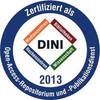In: Proceedings of SILVILASER 2009 : October 14-16, 2009 – College Station, Texas, USA. College Station, Texas, USA, SILVILASER 2009, pp. 54-62
Preview |
PDF, English
- main document
Download (522kB) | Terms of use |
Abstract
Airborne laser scanning is an evolving operational measurement technique for deriving forest parameters. The objective of the current study was to analyze the potential of full-waveform airborne laser scanning for tree species classification of a mixed woodland. The quantities used were the echo width, backscatter cross section, as well as the distribution of the echoes in vertical direction. Based on segmented tree crowns the mean backscatter cross section of all echoes above the 50th height percentile was computed. Additionally, the canopy density, describing the ratio of the number of all echoes above the 50th height percentile and the total number of echoes, was used for a knowledge-based classification of coniferous and deciduous trees. The achieved overall accuracy was 83%. Furthermore, the standard deviation of the echo widths per crown segment was applied for a separation of spruce and larch. An overall accuracy of the classified tree species red beech, larch and spruce of 75% was obtained. The presented results show that combining geometric information and backscattering properties of full-waveform airborne laser scanning data has a high potential for tree species classification.
| Document type: | Book Section |
|---|---|
| Title of Book: | Proceedings of SILVILASER 2009 : October 14-16, 2009 – College Station, Texas, USA |
| Publisher: | SILVILASER |
| Place of Publication: | College Station, Texas, USA |
| Date Deposited: | 28 Jul 2025 10:02 |
| Date: | 2009 |
| Page Range: | pp. 54-62 |
| Faculties / Institutes: | Fakultät für Chemie und Geowissenschaften > Institute of Geography |
| DDC-classification: | 550 Earth sciences |









